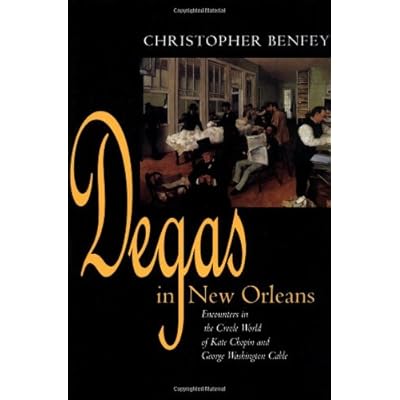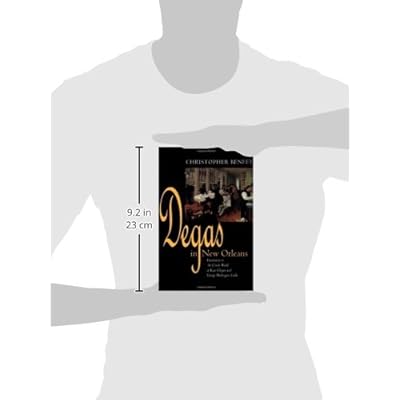Degas in New Orleans: Encounters in the Creole World of Kate Chopin and George Washington Cable
Category: Books,Reference,Writing, Research & Publishing Guides
Degas in New Orleans: Encounters in the Creole World of Kate Chopin and George Washington Cable Details
Review "Mr. Benfey is both thoughtful and erudite." -- Richard Bernstein, New York Times Read more About the Author Christopher Benfey is art critic for Slate magazine and Associate Professor of English/Chair of American Studies at Mount Holyoke College. He is the author of The Double Life of Stephen Crane (1992) and Emily Dickinson and the Problem of Others (1984). He is the recipient of Guggenheim and National Endowment for the Humanities fellowships. Read more From The Washington Post "Yes, Degas in New Orleans involves a haunted house, ghosts, and titillating couplings, but all elements are solidly anchored in historical events and retold by Christopher Benfey in a deft synthesis of art criticism and historical speculation. . . . An elegant introduction to a city that remains a secretive, seductive metropolis. Read more

Reviews
Maybe the most important thing for you to know about this book is that it isn't just, or even mostly, about Edgar Degas. If you're in the market solely for an art book about Degas, you may not like this book. What this book is really about is 19th century New Orleans. Degas' 1872-1873 trip is the main theme which the author has used as his framework. Mr. Benfey "improvises" on this theme and goes off in interesting directions. He talks about what made New Orleans unique- the early Creole settlers vs. the "Americans" that arrived after the Louisiana Purchase; the free black population (pre-Civil War) vs. the slaves who became free because of the war; the rupture caused by the war- as New Orleans was occupied by Federal forces through almost all of the conflict. (Many of the local women proved to be fairly feisty in showing their contempt for the Yankees. One woman in the French Quarter supposedly downloaded the contents of a chamber pot onto Admiral Farragut's head. On another occasion, the soldier in charge of keeping order, General Benjamin "Beast" Butler, was riding by some women and they all turned their backs to him. Butler remarked, "those women evidently know which end of them looks best.") After the Civil War the economy, based almost solely on King Cotton, took a beating in the Depression of the 1870's. Yankee "carpetbaggers" were despised. Liberals who wanted integration of the races did battle, sometimes literally, with reactionary forces who yearned for a return to the days of slavery. Mr. Benfey works in some analysis of the writers Kate Chopin and George Washington Cable, who were interested in some of the above themes. The author does devote a fairly good portion of the book to discussing Degas' "Louisiana Connection," (his mother was born in New Orleans; he had relatives who were involved in the cotton trade; and his younger brother, Rene, left France to try to make his fortune in New Orleans). If you enjoy Degas' art, you will find Mr. Benfey's musings on the portraits and "genre scenes" that Degas did during this period to be interesting and informative. For example, from a purely painterly standpoint, Degas enjoyed the juxtaposition of black and white skin, as well as the white of cotton against the black suits and hats commonly worn by businessmen of the time. Mr. Benfey also, convincingly, shows that Degas' started to use, in these paintings, certain compositional effects- such as slanted floors, the arrangement of figures in interior spaces, and certain hand and head movements- that would shortly reappear in the more famous "ballet paintings." We also see Degas in transition from his early "realistic" phase to a looser, more "Impressionistic" style of painting. I also found it interesting that Degas was fascinated by many things he saw while walking around New Orleans, but he was limited mostly to painting interior scenes because the light of New Orleans was bothering his eyes. (He started to have problems with his vision while serving in the Franco-Prussian War of 1870. By the time of his death in 1917 he was nearly blind.) There was enough about Degas and his family and art in this book to satisfy me, plus I enjoyed Mr. Benfey's "improvisations." If, in addition to being a Degas fan, you have any interest in the antebellum and post-Civil War worlds of New Orleans, I think you will get a lot of enjoyment and intellectual stimulation from this book.



